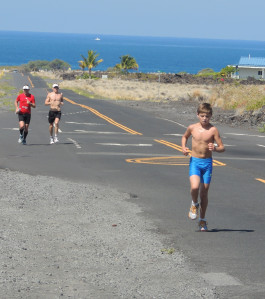My training week always starts on a Monday, so to do a Half Ironman at High Altitude on the Sunday before starting a new training week presents a few challenges of its own, none more so the fatigue that will build should the body not be presented with sufficient recovery time. (Half Ironman = 1.9km Swim/90km Cycle/21.1km Run)
Well I did give my body some recovery, as other than a short and easy 7km run I took Monday off, before testing and preparing myself physically and mentally the rest of the week for the challenges that loom in September and October.
Tuesday was swim and core in the morning, followed by a tough run session on legs which I expected to be fatigued but they surprisingly felt remarkably fresh in the afternoon. Session included a 30 minute warm up, 8 hills and 5 threshold intervals (4 x 2m:30 and 1 x 5 minutes) on the awesome Boulder trails.
Wednesday was another semi recovery day, with an easy swim, bike and run, totalling 3 hours.
Thursday required an 8km run, immediately followed a two and a half hour ride, which was to include a 30 minute Time Trial. Well this burnt all over, legs, lungs and mind and while the sun was hot it was a very different but pleasing burn, as I managed to go sub 30minutes for 20km, a first in my lifetime. Afternoon required another swim session before preparing myself mentally for a tough 100 mile (160km) ride the next day.
So Friday required a long ride up Big Thomson’s Pass (a 32km + climb), including some nasty switchbacks at Devil’s Gulch en route to Estes Park and back down Highway 36. I’m not sure if it’s my lack of fitness for such a long ride or the long climb, but this was one of the toughest training rides I’ve undertaken. Perhaps it was the altitude as I’m not sure we go that high in an Aeroplane? So I took the rest of the day off after 5 and a half hours on the bike.
Saturday dawned and this would test my legs, as the morning run session required 3 x 2 mile (3.2km) and 1 x 1 mile intervals on the trails at Coot Lake and with a good warm up/down I logged up 22km. Even though my body was tired from the previous days ride, my legs were still capable of some good splits within the intervals. A quick cup of coffee, a slice of banana loaf and a Muscle Milk and it was off to FAC swim pool for 3 odd kilometres of swim intervals.
And just when my legs were thinking they need some much needed rest, it was Long Run day at Teller Farm Trail. Quite an undulating course and I managed 26km in the 2 hrs 10 minutes at my disposal, which was less than I had hoped for, so did another 6km run in the afternoon after a quick swim session, to ensure I racked up 32km of running. This was a day of suffering, especially the morning run as I was forcing myself to hang on to the tail end of the running group almost the whole way and all I could think about was pay the price now, to avoid the pain of regret later.
Yes… tomorrow is a recovery Day!
Thanks again to my sponsors and in particular Isuzu SA for helping me live this Dream.






